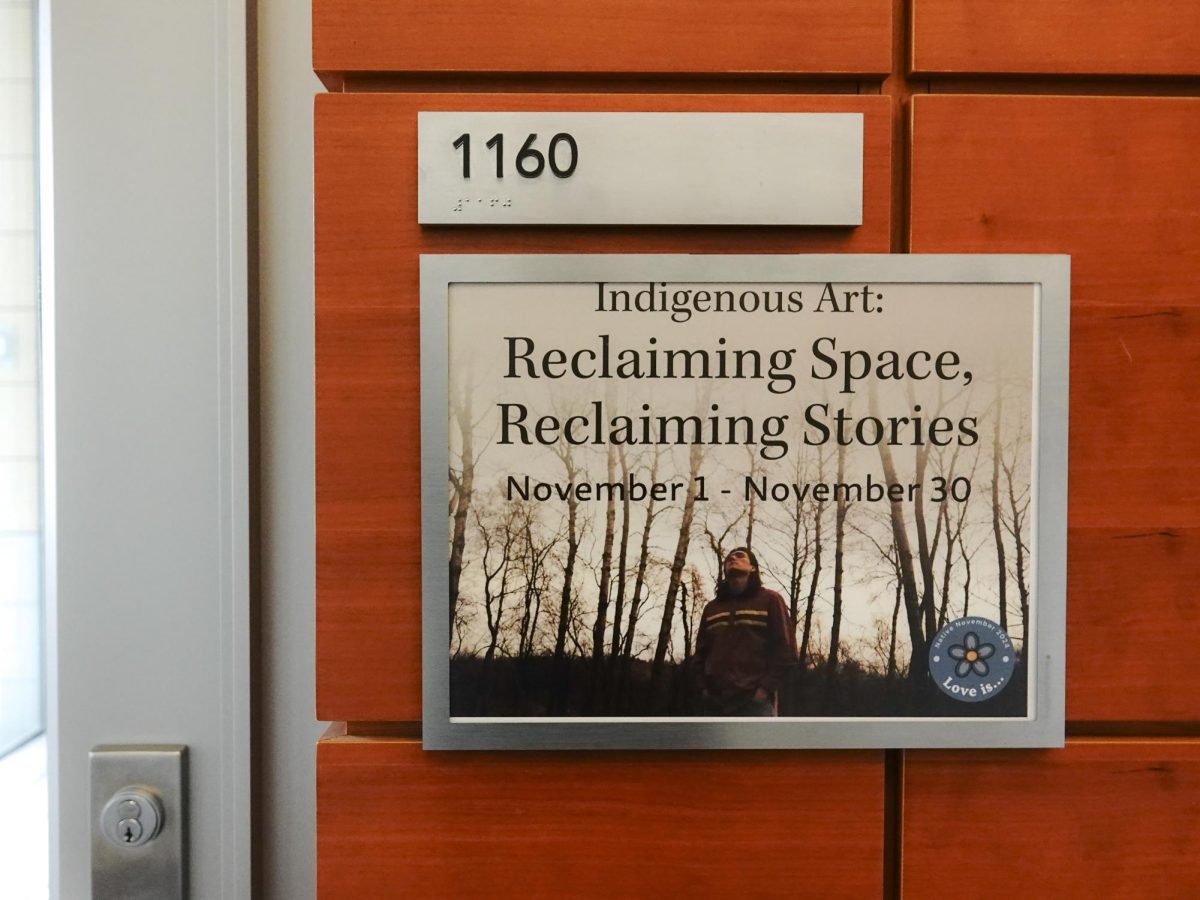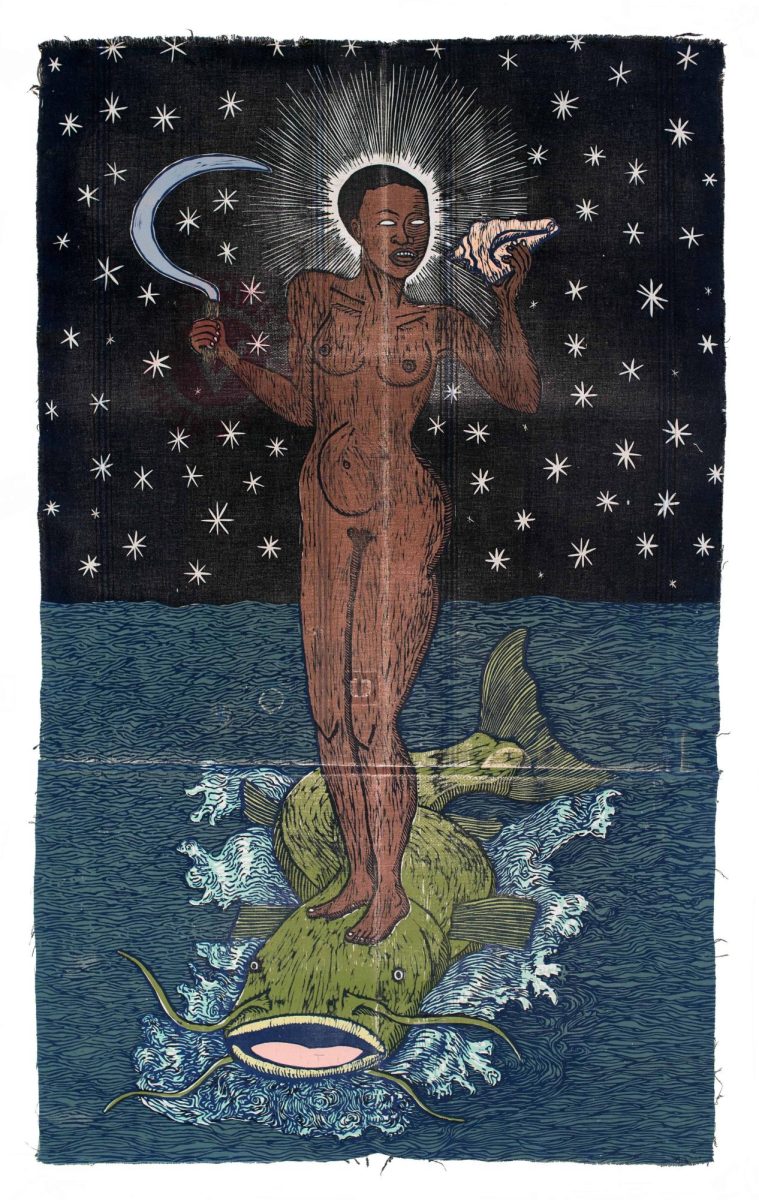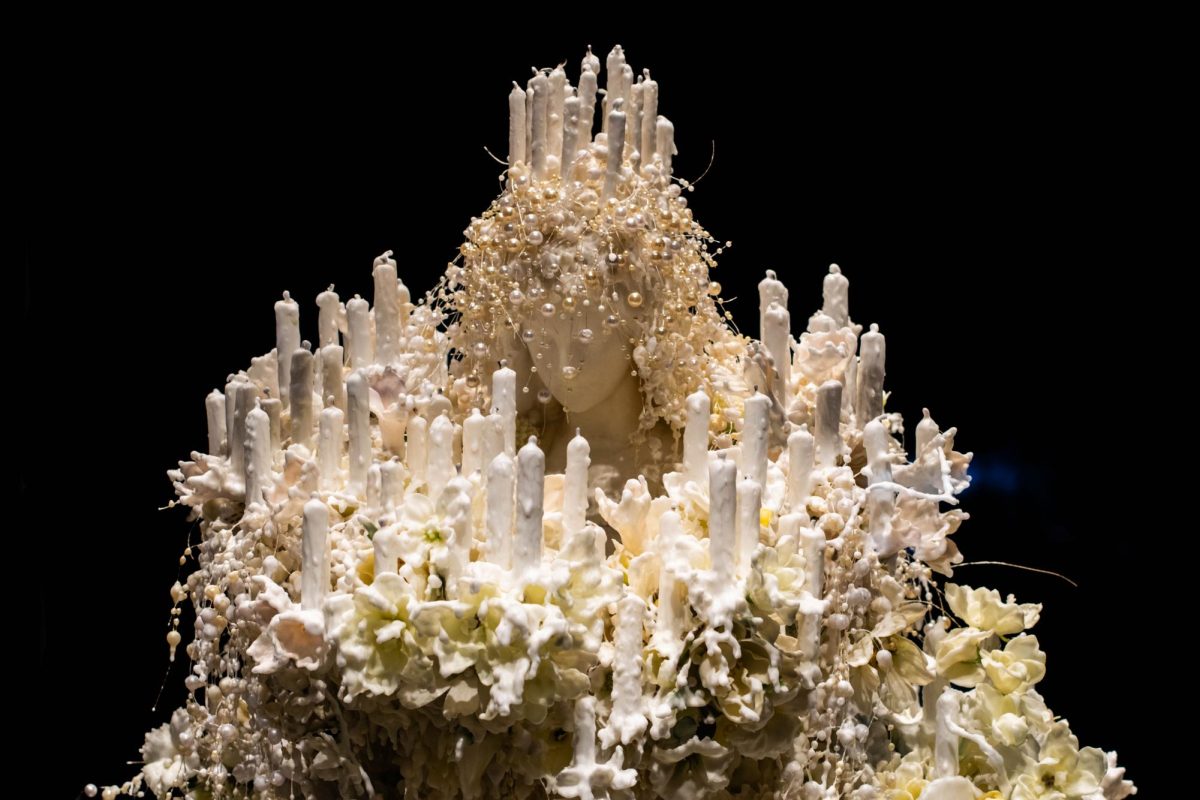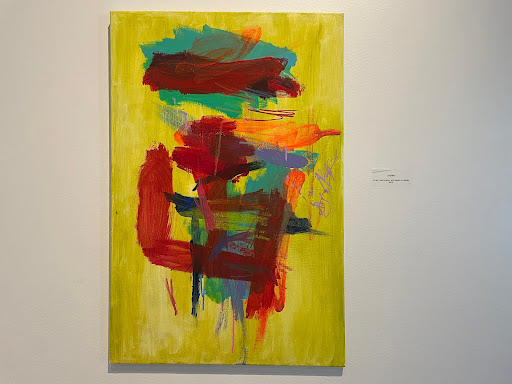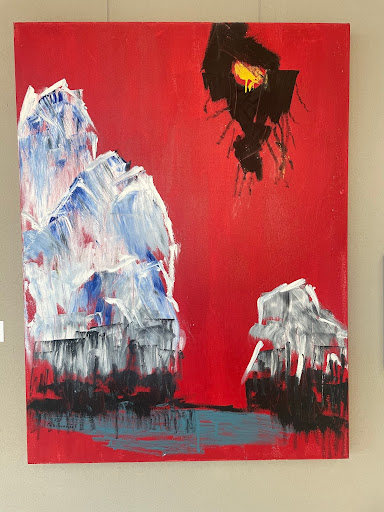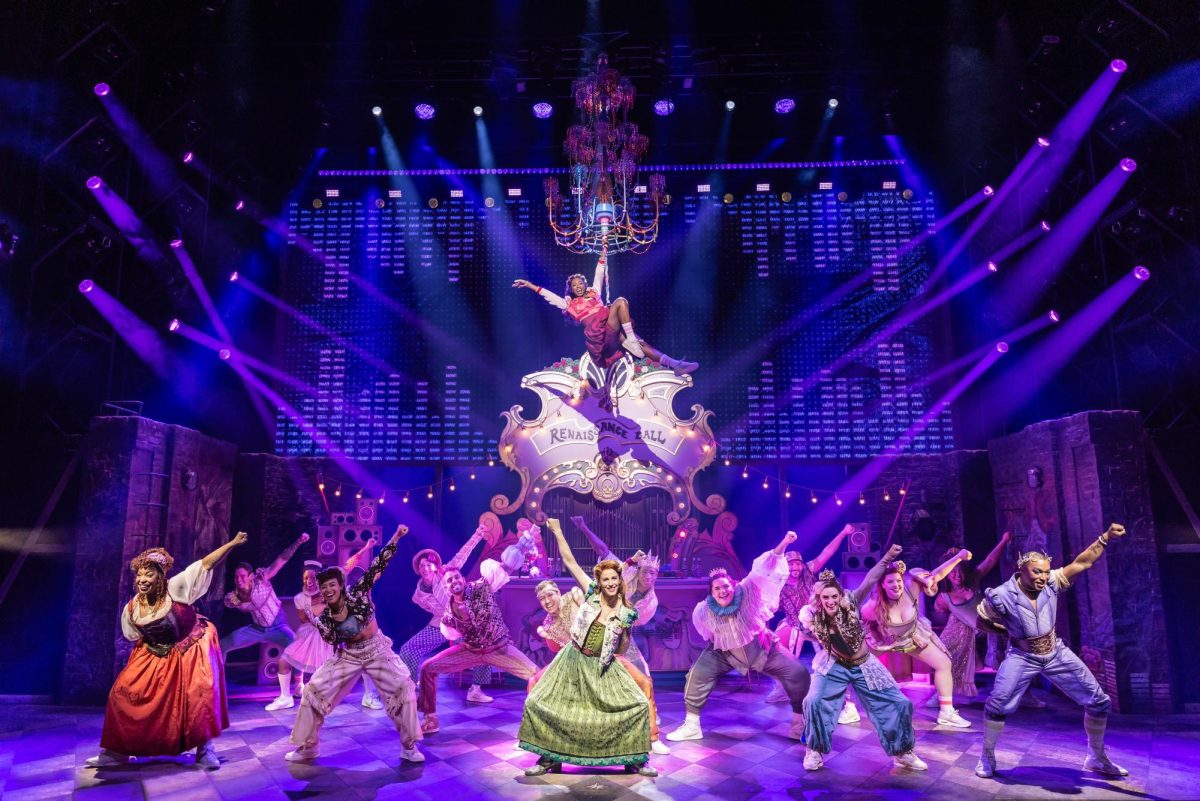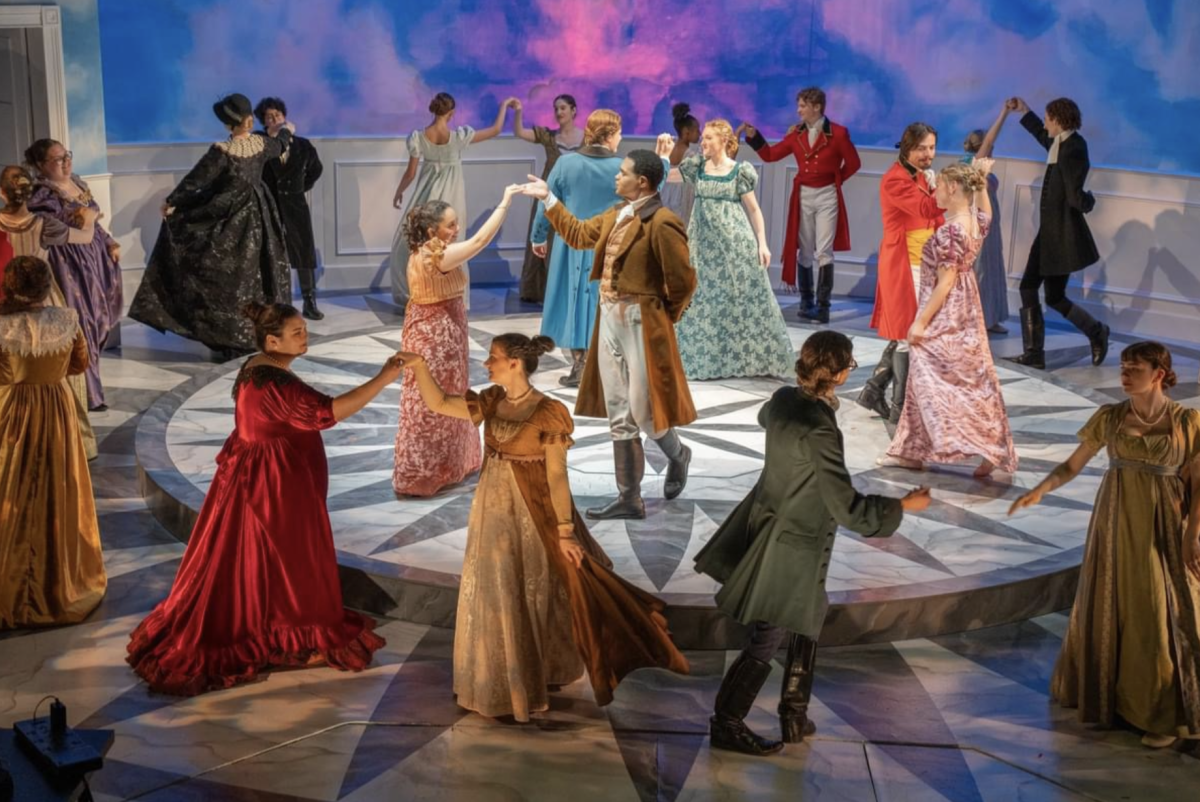The first floor of the Wisconsin Institute of Discovery is normally filled with chatter from studying students. But, on the night of Friday Nov. 1, it was imbued with the sounds of beating drums.
A drum circle kicked off the opening reception of the “Reclaiming Spaces, Reclaiming Stories” exhibit, which features the artwork of 11 Indigenous students from the University of Wisconsin. The exhibit, housed in the Hub Central at the Discovery Building, consists of poetry, sculpture, photography and woodwork.
The exhibit’s opening reception marks the beginning of the university’s celebration of Native November, a month full of events meant to celebrate Indigenous community and culture and educate students about Indigenous spaces. The theme for this year’s Native November, “Love Is…,” served as the inspiration for the art in “Reclaiming Spaces, Reclaiming Stories,” according to the Student Affairs website.
The exhibit was first imagined by Serena Cisneros, a mental health provider with University Health Services and Anishinaabe person from the Lac Courte Oreilles Reservation in northern Wisconsin. She connected with students from the Indigenous Student Center and the Indigenous student organization Wunk Sheek to find artists to showcase.
Cisneros said she saw the exhibit as a way to carve out a designated space to celebrate Indigenous culture while highlighting the works of students that she works with across campus.
“Hearing everybody’s stories of what the art meant for them and what this event means to them, it’s very good medicine for me,” Cisneros said. “It reminds me why I’m doing the work I’m doing.”
Cisneros spoke at the opening reception in front of the student artists’ friends, family and community members. She used the opportunity to thank contributors to the exhibit, gifting them with sweetgrass, wild rice, seeds and medicine.
UW provost Charles Lee Isbell also spoke at the event, stressing the important role that art plays in creating Indigenous spaces and strengthening the community’s impact on campus.
“Art tells us where we are, not just where we were, and it tells us where we want to be,” Isbell said. “I think that’s a beautiful thing.”
Jami Balicki, a first-year graduate student pursuing a master’s degree in fine arts at UW, is interested in using photography to shine a light on Indigenous communities. Balicki, who entered a photograph into the “Reclaiming Spaces, Reclaiming Stories” exhibit, said she was inspired by the exhibit’s theme to submit an image of her brother.
Balicki said she chose the photograph, titled “Split Ends,” because her brother is one of her best friends. For Balicki, her photography serves as a way to connect with her Indigenous heritage. Balicki said her brother serves as a perfect symbol for that voyage.
“Reconnecting to my Indigenous identity has been a lifelong journey for me,” Balicki said. “My brother has been an integral part of that.”
Together, the pair are working to learn more about their shared culture and attend Indigenous events. Enrolling at UW after completing her undergraduate degree at Edgewood College, Balicki said she was eager to find a community of Indigenous students and leaders on campus. She first met Cisneros at one of the Indigenous Student Center’s weekly dinners, and shortly after, was convinced to contribute to the exhibit.
Wrigley Bastian, a UW freshman, met Cisneros the same way. Bastian created four new poems for the exhibit. While one focuses on love as a broad concept, the other three have a deep focus on Indigenous languages. Never having her poetry officially displayed before, the exhibit offered Bastian a chance to publicly show off her poetry in a way she couldn’t before.
But for Bastian, the exhibit also allowed her to take part in creating a specifically Indigenous space on a campus sitting on Ho-Chunk land while reminding audiences that Indigenous peoples remain a key part of UW’s culture and community.
“We are still here and this land is still ours, even if it was taken,” Bastian said. “It’s a form of survival and continuance.”
Apart from Bastian and Balicki’s art, the exhibit featured a carved poplar sculpture, a tribute tree and a video installation of the artists discussing what love means to them in their own Indigenous language. The exhibit is set to remain open through November and into 2025.
Cisneros says it’s important to reclaim Indigenous spaces on the UW campus, both as a way to respect the Indigenous peoples of the past and to continue creating community for students like Balicki and Bastian. While she has enjoyed connecting with intertribal communities, Balicki agrees about the need for reclaiming Indigenous spaces on campus.
“It’s very important for all of us to have a safe space to be together, have a voice and to raise visibility for ourselves,” Balicki said. “We should keep having more spaces occupied, but I think this is a beautiful start.”
More film screenings, expert colloquiums and community discussions set to launch during Native November can be found on the Student Affairs page.


